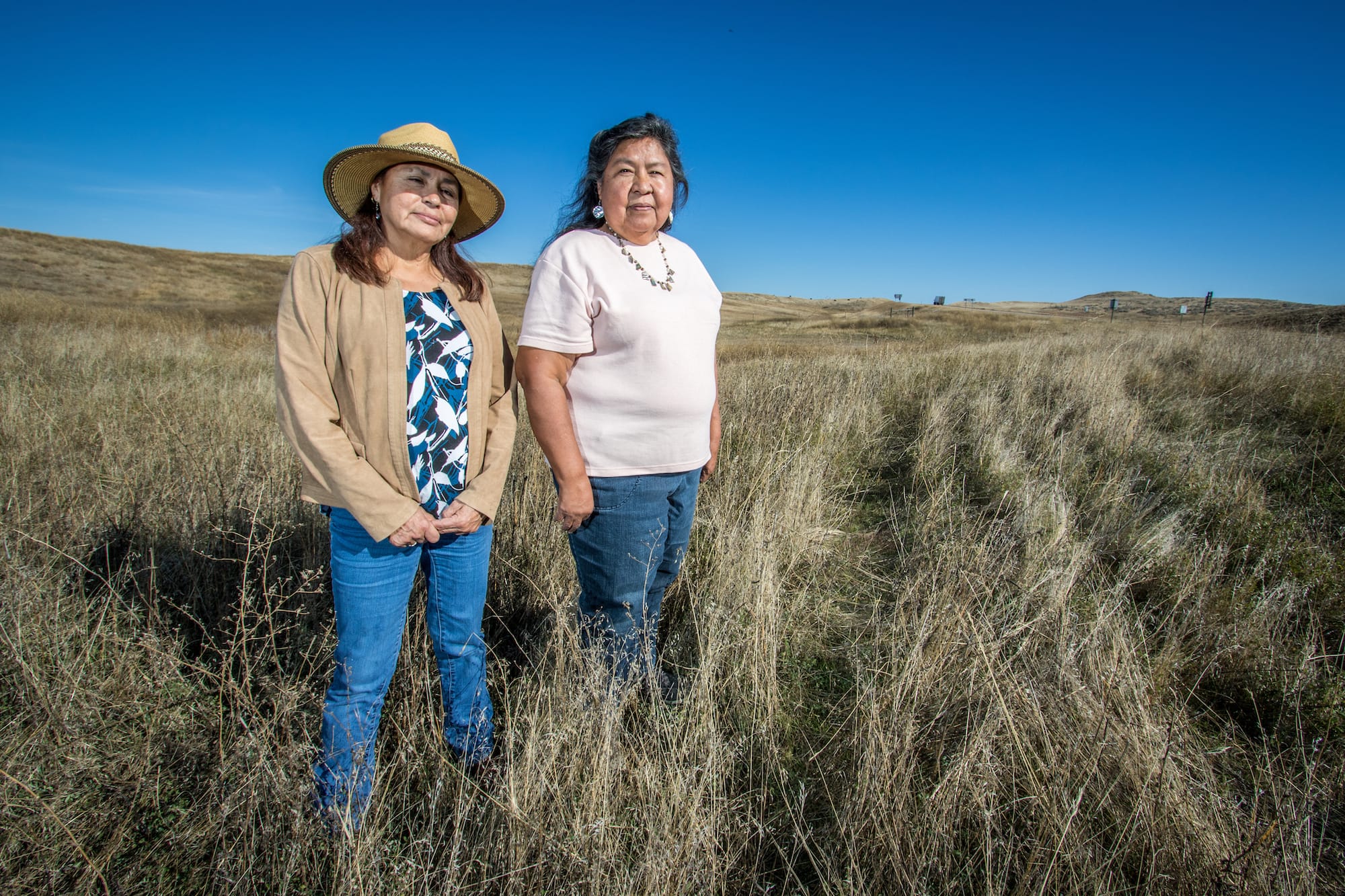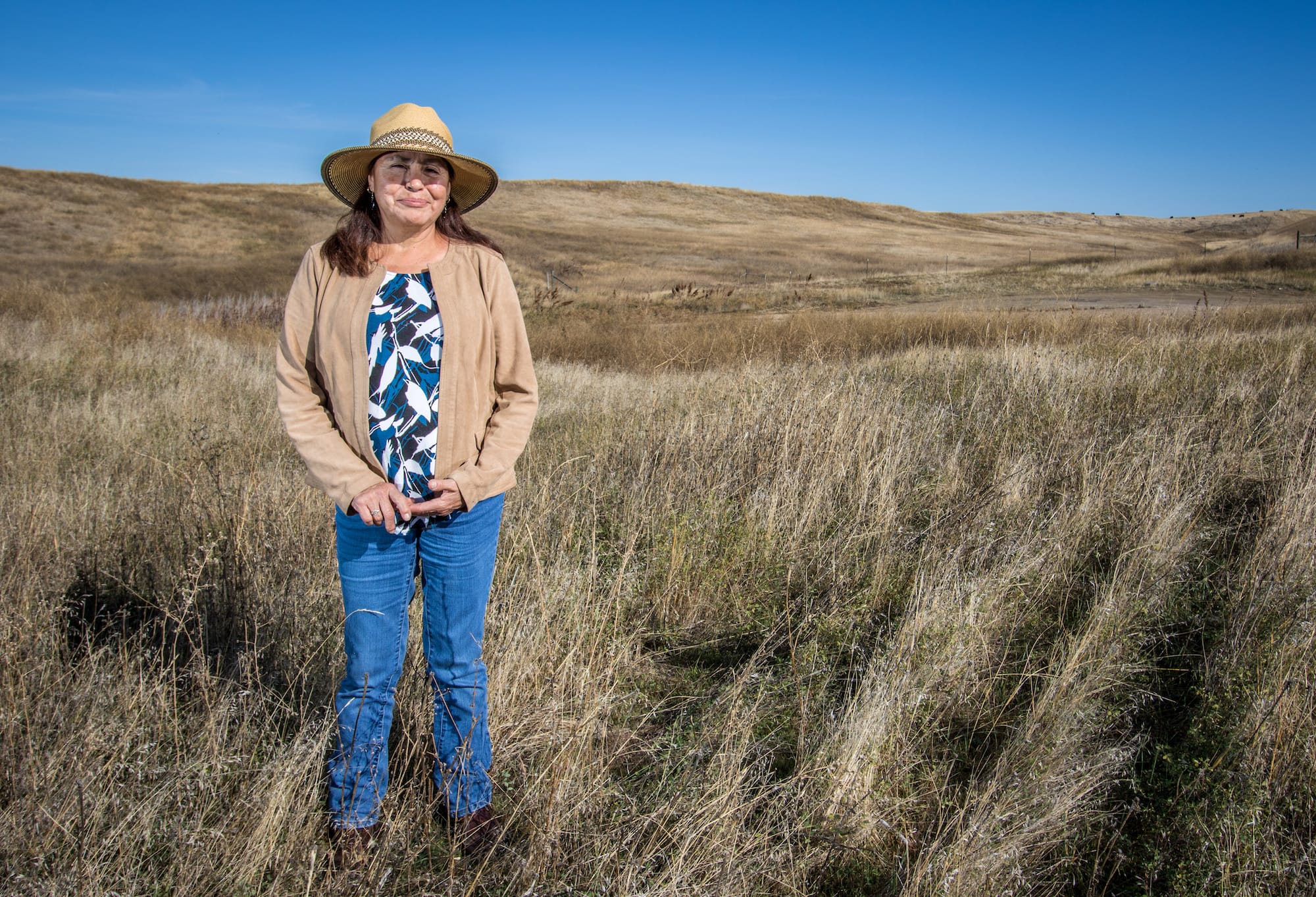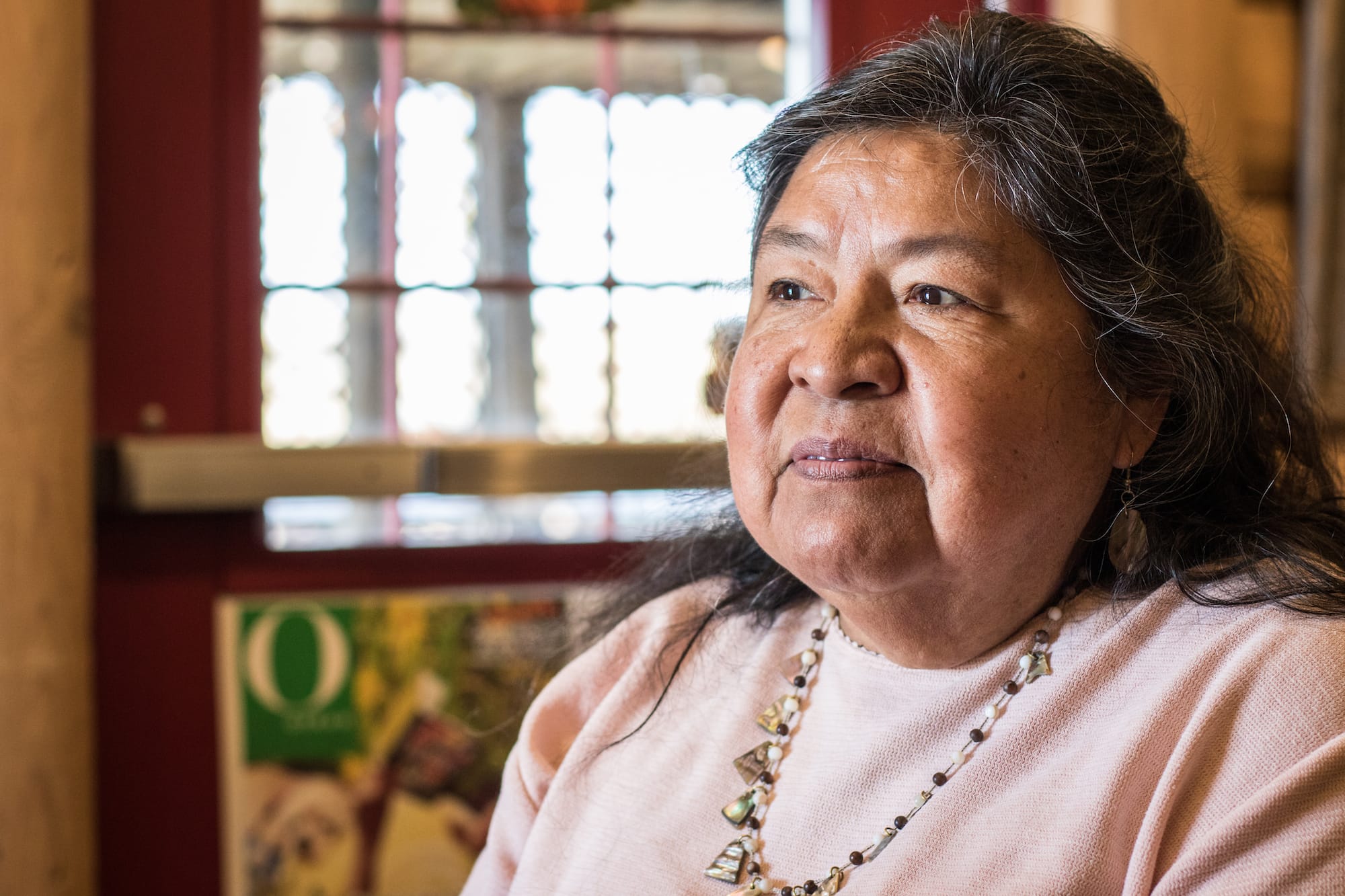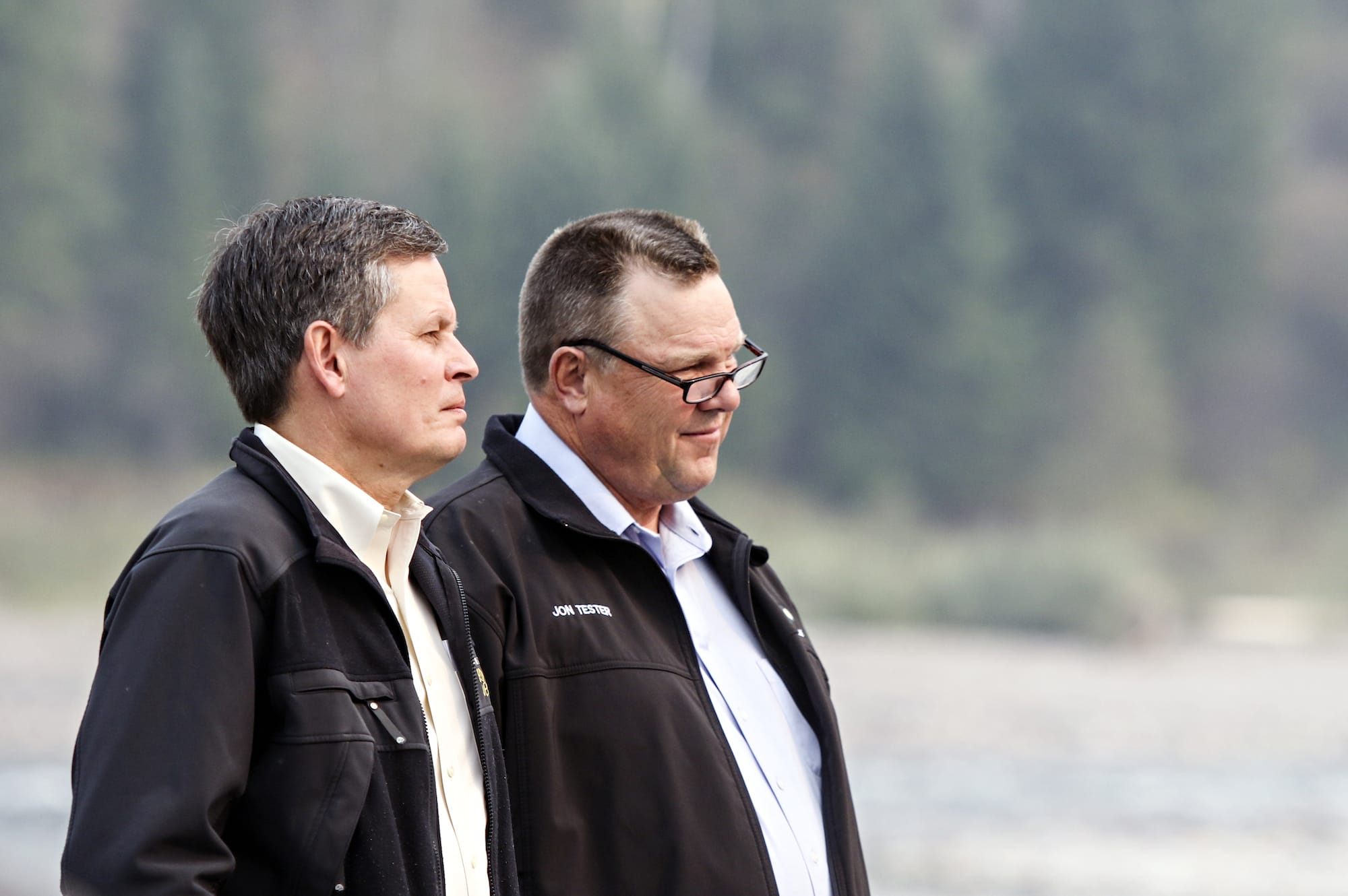
Solutions
Montana lawmakers plan to present five bills to the 2019 Legislature to adjust laws addressing the epidemic of missing and murdered Indigenous women, while at the federal level Native American advocates urge reauthorization of the Violence Against Women Act along with protections to protect Indigenous women and girls
By Molly Priddy
By Tristan Scott
State Policy
By Molly Priddy
CROW AGENCY — Hanna Harris was 21 years old when she was murdered and left in a ditch, her body remaining there for days in the July sun before searchers found her.
A member of the Northern Cheyenne Tribe in Lame Deer, Montana, Hanna had a 10-month-old son when she went missing in 2013. By the time they found her body, the decomposition prevented investigators from specifying a cause of death. In 2015, two people went to prison for her murder.
In media interviews following her death, her family said they attempted to get law enforcement involved early on when they suspected the worst, but said they were stonewalled from the start. They raised money to have a reward for more information on her death, and hosted rallies calling for “Justice for Hanna” to call for better responses and resolution not only in Hanna’s case, but thousands of other Indigenous women across the United States and Canada who have disappeared.
Now, five years after her death, Hanna’s name could be part of a proposed solution to improve law enforcement’s response when it comes to investigating such cases.
With increased national attention on sexual assault in the #MeToo era, a contingent of Montana lawmakers hope to take advantage of the country’s energy and shine more light on missing and murdered Indigenous women, which has its own hashtag: #MMIW.
State Rep. Sharon Stewart-Peregoy, D-Crow Agency, and Rep. Rae Peppers, D-Lame Deer, are shepherding five bills to the 2019 Montana Legislature to deal with missing persons. One is called “Hanna’s Act” at Peppers’ request.
Hanna’s Act would give the Department of Justice authorization to assist with all missing persons cases. It’s one step that Peppers hopes will be the start of many to make life less violent for Indigenous women.
“It’s not safe to be a Native woman,” Peppers, a four-term legislator and member of the Crow tribe, said. “And it’s not taken seriously. This is an epidemic.”

On some reservations, Indigenous women are murdered at a rate 10 times the national average. Eighty-four percent of American Indian and Alaska Native women have experienced violence in their lifetimes, according to a study from the National Institute of Justice. The comparative average rate for white women is 71 percent.
In Montana, Native American women make up 3.3 percent of the state’s population. But as of Oct. 25, 12 of the 119 people in the Montana Missing Persons Clearinghouse were Native American women, accounting for 10 percent of the people reported missing in the state, according to the state Department of Justice.
The NIJ study reported that more than half of all Indigenous women have experienced sexual violence, physical violence by an intimate partner, and stalking. “Unintentional injury” ranks third in the leading causes of death for American Indian and Alaska Native women.
Yet despite the frequency with which Native American women go missing, there is not a singular database tracking their number, so no one knows exactly how many cold cases are still waiting for answers.
The Federal Bureau of Investigation has jurisdiction on tribal lands for certain major crimes, such as homicide. The FBI reported 5,711 Indigenous women missing nationwide in 2016, based on the entries in the National Crime Information Center (NCIC). In 2017, they counted 5,646 missing Indigenous women, and 2,758 missing as of June 30, 2018.
“The NCIC does not maintain statistics on individuals reported as ‘murdered.’ As a reminder, the entry of records into the NCIC is voluntary, with the exception of federal warrants and missing juveniles,” the FBI said in a statement.
“There is a distinct difference between the number of missing person record entries into the NCIC versus the number of active missing person records,” the FBI statement continued. “Collectively, including previous years/entries up to June 30, 2018, there were 669 active Native American female missing person records.”
Some missing persons cases are never reported. And a jurisdictional maze awaits anyone reporting a suspected crime in Indian Country. Tribal law enforcement, the Bureau of Indian Affairs (BIA), the FBI, and the U.S. Attorney can have jurisdiction depending on the location, the crime, and whether the people involved are Native American.
For example, non-tribal members who assault Indigenous women within a reservations boundaries cannot be arrested or prosecuted by tribal authorities, under a 1978 U.S. Supreme Court decision. The Violence Against Women Act Reauthorization of 2013 slightly modified this decision.
While the jurisdictional quagmire needs attention, Stewart-Peregoy said a more-pressing problem right now is the response from law enforcement when Indigenous people are reported missing.
It’s typically a slow process if it starts at all, she said, one rooted in a general lack of policing on tribal reservations and in the stereotypes that Indigenous people face when seeking help. Stewart-Peregoy, who has served in the Legislature since 2009 and is a member of the Crow Nation, said the stereotypes have likely influenced responses from law enforcement.
“The stereotypes that Indian women are loose, Indian women drink, there’s all of these negatives put on Indian women,” Stewart-Peregoy said. “The response is not there. By the time they do respond, sometimes it’s too late.”
“The families have told us about the lack of follow through,” Peppers said. “You can almost guarantee that most of these families (in the Crow Nation) have been through this.”
Response times were also the subject of many tribes’ comments during the U.S. Department of Justice Office of Violence Against Women’s Tribal Consultation in 2017. Tribal representatives were asked how to better serve their communities when it comes to missing and murdered women, and many said law enforcement responses are inadequate.
“Tribal leaders have often raised the inadequate law enforcement response to reports of missing Native women. Too often, cases are ruled as suicide when the family knows the cause of death was homicide,” Michael Williams of the Akiak Tribal Council in Alaska said.
One unidentified tribal citizen from Galena, Alaska, said declaring a state of emergency about this issue might be a warranted response.
“Every woman you’ve met today has been raped,” she told the OVW.
According to the FBI, there are more than 140 full-time FBI Special Agents and more than 40 victim specialists working on Indian Country investigations. The FBI also operates 17 Safe Trails Task Forces across the country, joining federal, state, local, and tribal partners together, including over 150 full and part time task force officers.
The bureau also reported that a full 33 percent of the FBI’s victim specialists and 50 percent of the FBIs child and adolescent forensic interviewers are assigned to work with victims and families in Indian Country. This includes both services for victims and families, as well as training for law enforcement.
Recently, the Department of the Interior, which oversees the BIA, and the federal DOJ announced a “major” expansion of the Justice Department’s Tribal Access Program (TAP) for the NCIC, which provides tribes with access to national crime databases. The Interior Department will fund the installation of three new TAP Kiosks where BIA-Office of Indian Services deliver direct social services. They should be installed by the end of 2019.
The Interior Department also intends to expand TAP access at all 28 BIA-Office of Justice Services-operated law enforcement agencies and detention centers. The expansion should provide access to at least 50 tribal communities that didn’t have it before, and the DOJ will fund access for 25 tribes.
“For far too long, a lack of access to federal criminal databases has hurt tribal law enforcement—preventing them from doing their jobs and keeping their communities safe,” Deputy Attorney General Rod Rosenstein said in a statement. “With the Tribal Access Program, participating tribes will be able to protect victims of domestic violence, register sex offenders, keep guns out of dangerous hands, and help locate missing people. This milestone demonstrates our deep commitment to strengthening public safety in Indian country.”
Annita Lucchesi, a doctoral student at the University of Lethbridge and Southern Cheyenne descendant, wanted to know how many Indigenous women have been murdered or gone missing in the last century. Given the lack of reliable information, she decided to build a database tracking these cases across North America from 1900 to present.
In the three years since she started the Missing and Murdered Indigenous Women Database, she’s collected 3,120 cases, with more than 140 reported in Montana. Lucchesi estimated that from 1900 to today, with an average of 200-300 cases a year, that 25,000 to 30,000 Indigenous women have disappeared.
In a new angle to her project, Lucchesi is conducting Freedom of Information Act requests to police departments across the country to collect data and show how differently each jurisdiction handles these cases.
“That’s part of the problem, there’s no centralized protocol,” Lucchesi said.
And Lucchesi said there’s power in gathering and keeping your own data.
“For so long, we’ve had every agency but ourselves collect data on us. Part of the reason this project is as successful as it is, is because it’s not affiliated with (other agencies),” she said. “We have complete control over the data. Being able to have that sovereignty in terms of how the data is cared for (and used) means a lot to people.”
Lucchesi works with many organizations in North America on MMIW issues, and said Montana’s lawmakers on both a state and federal level are responding.
“Montana is definitely taking leadership on this issue in a way that I’m really grateful for. I really respect women like Rae Peppers. Her expertise on the proceedings on policy … were really important,” she said. “There are other states that are starting to address this, and largely it’s due to Native women policy makers like Rae Peppers. Even when government is stepping up to address the issue, it’s because we’ve worked hard to make sure we’re represented.”
Lucy Simpson, executive director of the National Indigenous Women’s Resource Center with headquarters in Lame Deer, agreed that Native American state lawmakers are a big reason these issues have been pushed to the forefront.
“We also have federal bipartisan representatives who have been involved in this issue,” Simpson said.
“These are issues that have been going on for a long time; locally people have been complaining about the lack of appropriate response, but I think the awareness activity that has been happening nationally has people’s attention,” she added.
The Northern Cheyenne community is building a community task force to focus on grassroots activism. The task force is already considering a resolution for the tribal council to declare a state of emergency locally on MMIW issues, Simpson said.
“It’s mothers, it’s fathers, it’s children who have been impacted and don’t want to stop going to meetings or stop pushing,” Simpson said.
To get the results they want, Simpson said more people need to demand answers and change, including non-tribal members.
“To really create real, social change at the local level and the national level, we need to find allies and build a movement beyond ourselves,” she said. “A foundational piece of the work is education on what sovereignty means and how to collaborate with tribal communities in a real, useful way and not just come in from the top down and tell the communities what to do.”

Peppers and Stewart-Peregoy are members of the Legislature’s State-Tribal Relations Committee, which over the interim between sessions focused on missing persons, human trafficking, and violence against women, as the three topics often intermingle.
The committee’s work, including a 2017 hearing in Lame Deer, resulted in a report called “Addressing an Epidemic: Missing and Murdered Indian Women,” along with the proposed bills for the session. Other states, such as Minnesota, North Dakota, and Washington, are working on legislation to facilitate searches and authorize information sharing among law enforcement agencies.
Lawmakers worked with the Department of Justice on the proposals. One would require all law enforcement authorities to accept a missing persons report without delay. Another requires a missing child report to be filed in cases of custodial interference when the child’s whereabouts are unknown. One bill allows the state Office of Public Instruction to create a digital collection for school photos of children to be given to law enforcement if the child goes missing (parents can opt out of the program). One of the bills would allow the state to study options about breaking the cycle of runaway youth during the legislative interim.
Hanna’s Act would allow DOJ involvement in all missing persons cases, and create a specialist at the DOJ whose job is working with law enforcement and families, oversee entries into the NCIC, manage the state database and website, and educate the public. The specialist would be required to complete cultural competency training.
Stewart-Peregoy and Peppers said they expect an uphill battle on their proposals at the Legislature, especially the ones that require funding. However, the bills adjust the laws to help all sides involved in missing persons cases, both women said.
“We’re going to need a lot of help to get these bills passed,” Peppers said. “We are asking that every woman step forward. At the end of the day, all of the tweaks will help everyone. These are holes in the system that we’re trying to fill.”
Other solutions include more funding and training for tribal law enforcement and courts, Stewart-Peregoy said. For example, the Northern Cheyenne Indian Reservation covers 444,000 acres and had three police officers a few weeks ago, but one recently quit, Peppers said. Now just two officers patrol the whole reservation.
Domestic violence is also a problem that needs attention, the women said, through education and resources for Native American women and men. They would also like to overturn federal laws that restrict tribal courts from prosecuting non-tribal members for crimes committed on the reservation.
Curbing violence against women is a many-pronged process, the lawmakers said, and they want to do what they can to benefit every woman, Indigenous or not.
“We’re not politicians, we’re statesmen,” Stewart-Peregoy said. “We represent the people within our districts. This is for our constituents and all of Montana.”
84.3%
of Indigenous women experience violence in their lifetime
56%
of Indigenous women experience sexual violence
730,000
American Indian and Alaska Native women have experience violence in the last year
25,000-30,000
Native women are estimated to be missing or murdered since 1900
Federal Policy
By Tristan Scott

During the 31st annual Domestic Violence Awareness Month in October, Native American advocates and survivors mounted a campaign to raise public awareness surrounding missing and murdered Indigenous women, and called on lawmakers for a meaningful reauthorization of the Violence Against Women Act that includes provisions to protect Indigenous women and girls.
In 1994, Congress passed the Violence Against Women Act (VAWA) to strengthen penalties for perpetrators and fund victim services. Reauthorized in 2013, it was set to expire Sept. 30 but was extended through Dec. 7 under a stopgap-spending bill signed by U.S. President Donald Trump.
Advocates of its reauthorization and expansion are calling for swift passage of the measure.
In 2013, VAWA was expanded so that Indigenous communities would have an inherent right to exercise criminal jurisdiction over certain non-Native Americans who committed domestic or dating violence against Native American victims on tribal land. While these provisions didn’t cover all offenders, they did allow for the prosecution of non-Native Americans who resided on the tribal land, were employed by a participating tribal nation, or were “a spouse, intimate partner, or dating partner of a tribal member.”
Called the Special Domestic Violence Criminal Jurisdiction (SDVCJ) statute under the 2013 VAWA, advocates of its reauthorization say it can make all the difference for Indigenous women.
According to the Department of Justice, more than four in five Native women have experienced violence in their lifetimes, over half of them committed by an intimate partner.
Lucy Simpson, executive director for the National Indigenous Women’s Resource Center, said she was disheartened that Congress failed to act on the measure.
“We, along with our allies in the field, are disappointed that rather than engaging in a process to reauthorize a meaningful VAWA, Congress instead chose to push this process down the road by merely passing a continuing resolution to extend the existing VAWA through December 7, 2018,” Simpson said. “Tribal leaders and advocates have been calling attention to gaps in the VAWA 2013 special domestic violence criminal jurisdiction provisions. We remain committed to the position that it is only through restored tribal sovereignty that we will be able to enhance the safety of American Indians and Alaska Natives. We will rise to meet the challenge of substantive policy changes that recognize the inherent sovereignty of all of our tribal nations.”
A new version of the bill, introduced by Rep. Sheila Jackson Lee, D-Texas, seeks to further expand tribal jurisdiction over non-Native Americans, and builds on the 2013 version of VAWA by recognizing the “inherent” authority of tribes to arrest, prosecute and sentence non-Native Americans who abuse their partners.
“Eighty-four percent of Native American women living on reservations experience some form of sexual violence,” Lee said at a press conference at the U.S. Capitol in July. “We must protect them.”
Lee’s bill, H.R. 6545, also seeks to address the growing crisis by requiring the federal government, for the first time, to provide annual reports on the known statistics of missing and murdered Indigenous women and girls. It further directs the Bureau of Indian Affairs, the Indian Health Services and other agencies to work together and come up with standard protocols to investigate such cases.
Additionally, the bill includes a provision, labeled “Safety for Indian Women,” to improve tribal access to federal crime databases, an issue that arose after the 2013 law. A victim’s tribal citizenship or affiliation, for example, could be entered into the systems, a minor change that helps build the case for additional funding and other resources.
According to a 2018 report by the National Congress of American Indians, 18 different Indigenous communities have employed the SDVCJ provision of VAWA, resulting in 143 arrests, of which six went to trial. Of those six trials, five resulted in acquittal, and none went on to be examined by the federal government.
Historically, VAWA has enjoyed bipartisan support, and U.S. Sen. Steve Daines, R-Montana, recently pressed the Senate Committee on Indian Affairs to hold a hearing about missing and murdered Indigenous women. In September, Daines sent a letter to the committee chair and vice chair urging them to take up the issue.
“We must do all in our power to curb the crisis of American Indian and Alaska Native women, girls, and others who disappear and whose cases never see justice,” Daines wrote. “Holding a formal discussion in the Senate Committee on Indian Affairs would be an important next step.”
Earlier this year, Daines introduced a resolution to designate May 5, 2018 as the “National Day of Awareness for Missing and Murdered Native Women and Girls.”
The resolution, cosponsored by a half-dozen other lawmakers, including U.S. Sen. Jon Tester, D-Montana, seeks to honor the memory of Hanna Harris, a Lame Deer woman who was murdered in 2013 on the Northern Cheyenne Reservation, and seeks to commemorate other missing and murdered American Indian and Alaska Native women in the United States. The Senate unanimously passed a similar resolution last year.
In late October, the U.S. Departments of Justice and the Interior announced the expansion of the Tribal Access Program for National Crime Information (TAP) to an additional 25 tribes, including the Blackfeet Nation.
The program not only provides access to national criminal databases but also enables tribes to enter and track information about missing persons.
“We are pleased that the Blackfeet Nation has been selected for expansion of the Tribal Access Program,” Montana U.S. Attorney Kurt Alme said. “The program will allow the Blackfeet Tribal Police and other tribal departments to enter information about missing persons into the national missing persons database, enter updates about each person and learn of updates from law enforcement across the country.”
“This will be a big step toward ensuring that missing persons, particularly Blackfeet women and children, are found, and that the Tribe has the most up to date information about missing members,” Alme, who also is vice chair of the Attorney General’s Native American Issues Subcommittee, said.
Blackfeet Tribal Business Council Chairman Tim Davis also hailed the expansion of TAP as a step in the right direction.
“Having real-time access to the TAP program and criminal information readily available to tribal law enforcement agencies provides the assurance that our residents are better served and protected,” Davis said. “Indian communities who have sadly experienced so many injustices for so long are now being afforded justice on a more timely and effective scale.”
The Blackfeet tribe will be Montana’s second tribe to join the TAP program. The Fort Peck Tribes of the Fort Peck Reservation, based in Poplar, currently participate in the program.
By the end of 2019, the Justice Department will expand the number of TAP participating tribes by more than 50 percent — from 47 tribes to 72 tribes.
TAP allows tribes to access to information in several national databases through the FBI’s Criminal Justice Information Systems network, including the National Crime Information Center and other databases.
The program also provides tribes the ability to access and exchange data with national crime information databases for both criminal and civil purposes.